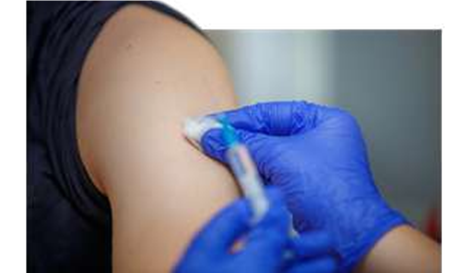A nurse is reinforcing teaching about self-care with an adolescent client who has infectious mononucleosis with splenomegaly.
Which of the following statements by the client indicates an understanding of the teaching?
“I will take an antibiotic for the next 10 days.”
“I will not play soccer until my doctor tells me I can.”
“I will need to get a varicella booster in 1 month.”
“I will expect the whites of my eyes to turn yellow.”
The Correct Answer is B
“I will not play soccer until my doctor tells me I can.” This statement indicates that the client understands the risk of splenic rupture due to splenomegaly and the need to avoid contact sports until the spleen returns to normal size.
Choice A is wrong because antibiotics are not effective for infectious mononucleosis, which is caused by a virus.
Choice C is wrong because varicella booster is not related to infectious mononucleosis and there is no evidence that the client needs it.
Choice D is wrong because jaundice (yellowing of the eyes and skin) is not a common manifestation of infectious mononucleosis and may indicate another condition such as hepatitis.
Normal ranges for spleen size are 7 to 14 cm in length and 3 to 4 cm in thickness.
Nursing Test Bank
Naxlex Comprehensive Predictor Exams
Related Questions
Correct Answer is C
Explanation

The correct answer is choice C. Allergy to gelatin is a contraindication for the inactivated influenza vaccine because gelatin is one of the ingredients in the vaccine. People with severe, life-threatening allergies to any ingredient in a flu vaccine (other than egg proteins) should not get that vaccine.
Choice A is wrong because pregnancy is not a contraindication for the inactivated influenza vaccine. In fact, pregnant people are recommended to get a flu shot because they are at higher risk of developing serious flu complications.
Choice B is wrong because immunosuppression is not a contraindication for the inactivated influenza vaccine. People with weakened immune systems can get a flu shot, but they should avoid the nasal spray flu vaccine which contains live viruses.
Choice D is wrong because moderate illness with fever is not a contraindication for the inactivated influenza vaccine. People who are moderately ill can still get a flu shot, but they should wait until they recover if they have a severe illness.
Correct Answer is ["A","C"]
Explanation
Choice A reason:
The Bradley method teaches the labor partner how to coach and support the mother during labor. This is true because the Bradley method emphasizes the role of the partner as an active participant and a skilled coach who can help the mother relax, breathe, and cope with pain during labor. The partner also serves as an advocate for the mother's preferences and needs in the hospital setting.
Choice B reason:
The Bradley method teaches the mother and partner about the variety of methods to control pain. This is false because the Bradley method does not teach a variety of methods to control pain, but rather focuses on relaxation as the main way to reduce pain during labor. The Bradley method also discourages the use of medication or medical interventions for pain relief, unless they are medically necessary.
Choice C reason:
The Bradley method prepares the woman to deliver without medical interventions and medications. This is true because the Bradley method aims to help women have an unmedicated birth with minimal medical intervention. The Bradley method teaches women how to avoid unnecessary interventions and how to cope with natural labor by using relaxation, breathing, nutrition, and exercise. The Bradley method also educates women on how to reduce their risk of having a C-section and what to do if it becomes medically necessary.
Choice D reason:
The Bradley method focuses on muscle control because muscle tension increases the pain of labor. This is false because the Bradley method does not focus on muscle control, but rather on deep and complete relaxation during labor. The Bradley method believes that muscle tension interferes with the natural process of labor and increases pain, so it teaches women how to relax their muscles and let their bodies do the work.
Choice E reason:
The Bradley method is the most widely used method in the US. This is false because the Bradley method is not the most widely used method in the US, but rather one of several options for natural childbirth. According to a 2017 survey by Listening to Mothers, only 4% of women reported using the Bradley method for their most recent birth, compared to 48% who used Lamaze, 14% who used hypnobirthing, and 9% who used other methods.
Whether you are a student looking to ace your exams or a practicing nurse seeking to enhance your expertise , our nursing education contents will empower you with the confidence and competence to make a difference in the lives of patients and become a respected leader in the healthcare field.
Visit Naxlex, invest in your future and unlock endless possibilities with our unparalleled nursing education contents today
Report Wrong Answer on the Current Question
Do you disagree with the answer? If yes, what is your expected answer? Explain.
Kindly be descriptive with the issue you are facing.
